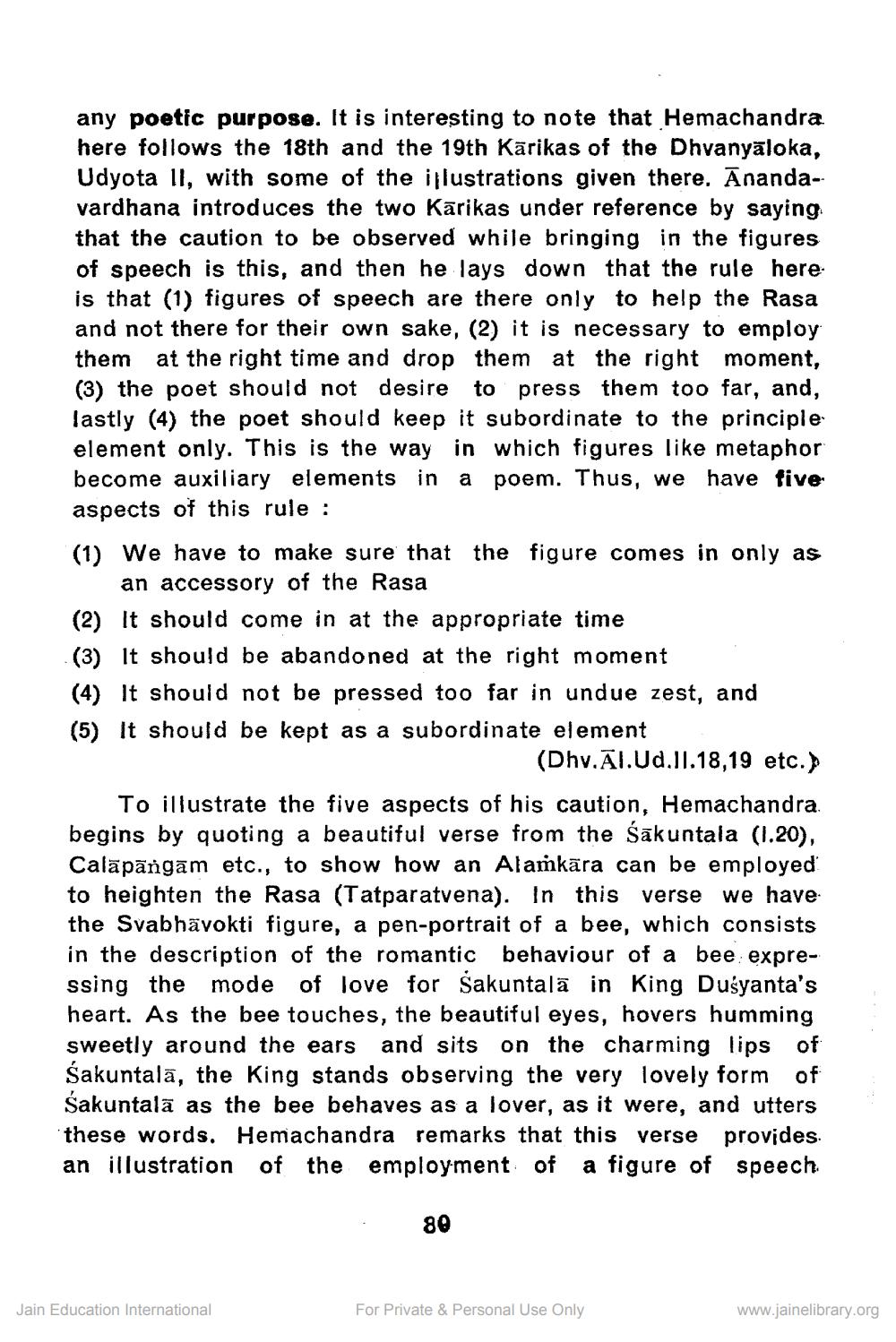________________
any poetic purpose. It is interesting to note that Hemachandra here follows the 18th and the 19th Kārikas of the Dhvanyaloka, Udyota ll, with some of the illustrations given there. Anandavardhana introduces the two Kārikas under reference by saying that the caution to be observed while bringing in the figures of speech is this, and then he lays down that the rule here. is that (1) figures of speech are there only to help the Rasa and not there for their own sake, (2) it is necessary to employ them at the right time and drop them at the right moment, (3) the poet should not desire to press them too far, and, lastly (4) the poet should keep it subordinate to the principle element only. This is the way in which figures like metaphor become auxiliary elements in a poem. Thus, we have five aspects of this rule : (1) We have to make sure that the figure comes in only as
an accessory of the Rasa (2) It should come in at the appropriate time (3) It should be abandoned at the right moment (4) It should not be pressed too far in undue zest, and (5) It should be kept as a subordinate element
(Dhv.Āl.UdJI.18,19 etc.) To illustrate the five aspects of his caution, Hemachandra begins by quoting a beautiful verse from the sākuntala (1.20), Calāpāngām etc., to show how an Alamkāra can be employed to heighten the Rasa (Tatparatvena). In this verse we have the Svabhāvokti figure, a pen-portrait of a bee, which consists in the description of the romantic behaviour of a bee expressing the mode of love for Sakuntalā in King Duśyanta's heart. As the bee touches, the beautiful eyes, hovers humming sweetly around the ears and sits on the charming lips of Sakuntalā, the King stands observing the very lovely form of Śakuntalā as the bee behaves as a lover, as it were, and utters these words. Hemachandra remarks that this verse provides an illustration of the employment of a figure of speech
80
Jain Education International
For Private & Personal Use Only
www.jainelibrary.org




